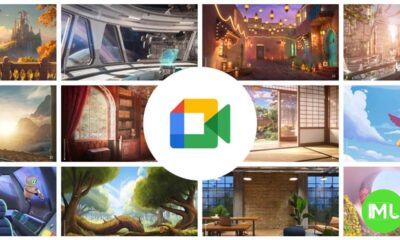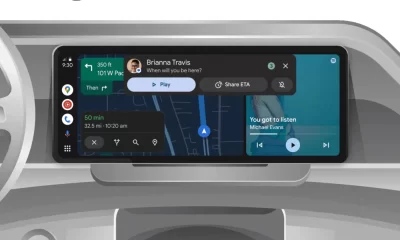Android
Google Maps incident reports on Android Auto and YouTube’s new transparent status bar: What to Expect

Top 3 Key Points:
- Google Maps on Android Auto now supports live incident reports for crashes, speed traps, and road hazards.
- YouTube for Android is rolling out a transparent status bar for a more immersive experience.
- Android apps targeting API 35 will display edge-to-edge by default, enhancing the visual experience.
After a long wait, Google Maps is finally rolling out the ability to add incident reports on Android Auto, a feature that has been highly anticipated by users. Google originally introduced incident reporting a few years back to allow drivers to alert others about road hazards like accidents and speed traps. However, drivers using Android Auto and Apple CarPlay couldn’t submit new reports, only view existing ones.
That’s now changing. In July, Google enabled incident reports on Apple CarPlay, and shortly after, Android Auto users in India started receiving the update as well. By the end of the month, Google had confirmed that an improved incident report system would roll out on all platforms, including Android Auto.
While the full rollout has been slow, some users are now seeing the feature live. A Reddit user recently shared that a new yellow triangle with a “+” icon appeared on their Android Auto interface. This button allows drivers to report various issues like crashes, slowdowns, construction, lane closures, and speed traps directly from their car’s screen.
This feature brings the mobile app’s incident-reporting functionality to the vehicle interface, making it easier for drivers to contribute real-time information while on the road.
YouTube’s New Transparent Status Bar
Meanwhile, YouTube for Android is getting a small but noteworthy update: a transparent status bar. Previously, a solid bar covered the top of the screen, but with this change, video thumbnails are now visible beneath the time and notification icons. This provides a more immersive browsing experience, aligning with the app’s Ambient mode.
However, it’s worth noting that the transparency effect doesn’t look as seamless when the dark theme is enabled on certain parts of the interface. This feature is being rolled out with YouTube version 19.37.35 but isn’t available to all users just yet.
Edge-to-Edge Screens on Android
Lastly, apps targeting API level 35 (Android 15) will now display edge-to-edge by default. This change aims to create a more premium and immersive user experience. According to an internal Google study, users generally prefer edge-to-edge screens over non-edge-to-edge ones, as it enhance the overall visual appeal.
In summary, these updates mark a shift towards more interactive and visually satisfying experiences across Android devices, whether you’re driving with Google Maps or watching videos on YouTube.
Android
Easy ways to change Android Auto’s look with light and dark themes

Android Auto is a helpful tool that lets you use your phone’s apps safely while driving. It connects your phone to your car’s screen, making it easier to use maps, music, and calls. One of the features many people like is the ability to change how Android Auto looks by switching between light and dark themes.
How to switch between light and dark themes
Android Auto offers two main themes: light and dark. The light theme uses brighter colors, which can make the screen easier to see during the day. The dark theme uses darker colors, which can be more comfortable for your eyes at night or in low light.
To change the theme, follow these steps:
- Open the Android Auto app on your phone.
- Go to the settings menu.
- Find the “Theme” option.
- Choose between “Light,” “Dark,” or “Set by car” (this lets your car decide the theme based on the time of day or your car’s settings).
Why themes matter
Using the right theme can make driving safer and more comfortable. The light theme is good for bright days, while the dark theme helps reduce glare at night. Having these options means you can pick what works best for you, making Android Auto easier to use in any condition.
In short, Android Auto’s theme options are simple to use and help you drive more safely by making the screen easy to see, no matter the time of day.
Android
Google’s New Updates: Gemini 2.5 Pro, Android 16 features, and Messages change

Google has just rolled out some exciting updates across its services and apps. Here’s a simple breakdown of what’s new and what it means for you.
Gemini 2.5 Pro is here
Google has launched Gemini 2.5 Pro, the latest version of its AI model. This upgrade brings smarter and faster responses, making it easier for users to get helpful answers. Gemini 2.5 Pro is now available in Google’s AI Studio and Vertex AI, so developers can build even better tools and apps using this technology.
Android 16 brings more customization
Android 16 is adding new ways to personalize your phone. One of the standout features is the ability to hide the clock on your lock screen, giving you a cleaner look if you want it. This is part of Google’s push to let users make their phones feel more unique. There’s also a new animation for the power button, making the experience smoother and more modern when you turn your phone on or off.
Google Messages removes the unsubscribe button
If you use Google Messages, you might notice that the “Unsubscribe” button is gone from some business messages. Google has removed this feature, so users now have to find other ways to stop unwanted texts. This change might make it a bit harder to manage spam, but Google hasn’t said why the option was removed.
What does this mean for you
These updates show that Google is focused on making its products smarter and more personal. Whether you’re using AI tools, customizing your phone, or managing your messages, you’ll see some changes that aim to improve your experience.
Android
Here’s what’s new with Google Keep and Android Automotive apps

Google Keep is getting a fresh look with the new Material You design, making it more colorful and easier to use on Wear OS smartwatches. The update brings bigger buttons and clearer text, so you can quickly jot down notes or check your lists right from your wrist. This makes Google Keep more handy when you’re on the go and don’t want to pull out your phone.
On another front, Android Automotive is improving how apps show information while you drive. Instead of opening full apps, you’ll see simple cards on your car’s screen that give you important details at a glance.
These cards help keep your focus on the road by showing things like music controls, navigation updates, or reminders without distractions. This new card system is designed to work smoothly with apps like media players and navigation tools, making your driving experience safer and more convenient.
Together, these updates show Google’s effort to make its apps smarter and easier to use in everyday life, whether you’re walking around with your smartwatch or driving your car. The focus is on clear, simple designs that help you get things done quickly without hassle.
In short, Google Keep’s new look on Wear OS and the smart cards in Android Automotive are small but useful changes that make tech fit better into your daily routine.
-

 Apps1 year ago
Apps1 year agoGboard Proofread feature will support selected text
-

 News1 year ago
News1 year agoSamsung USA crafting One UI 6.1.1
-

 Apps1 year ago
Apps1 year agoGoogle Contacts app testing new Besties Widget
-

 AI12 months ago
AI12 months agoGoogle Pixel 9 Pro may come with a complimentary one-year Gemini Advanced subscription
-

 Apps12 months ago
Apps12 months agoGoogle working on a new video editing feature for its Photo app
-

 Apps12 months ago
Apps12 months agoGoogle Maps lets you report traffic jams and accidents on Apple CarPlay, but not on Android Auto
-

 News1 year ago
News1 year agoBreaking: Samsung Galaxy S22 may get Galaxy AI features
-

 Apps1 year ago
Apps1 year agoGoogle Messages app will transform MMS chats into RCS










